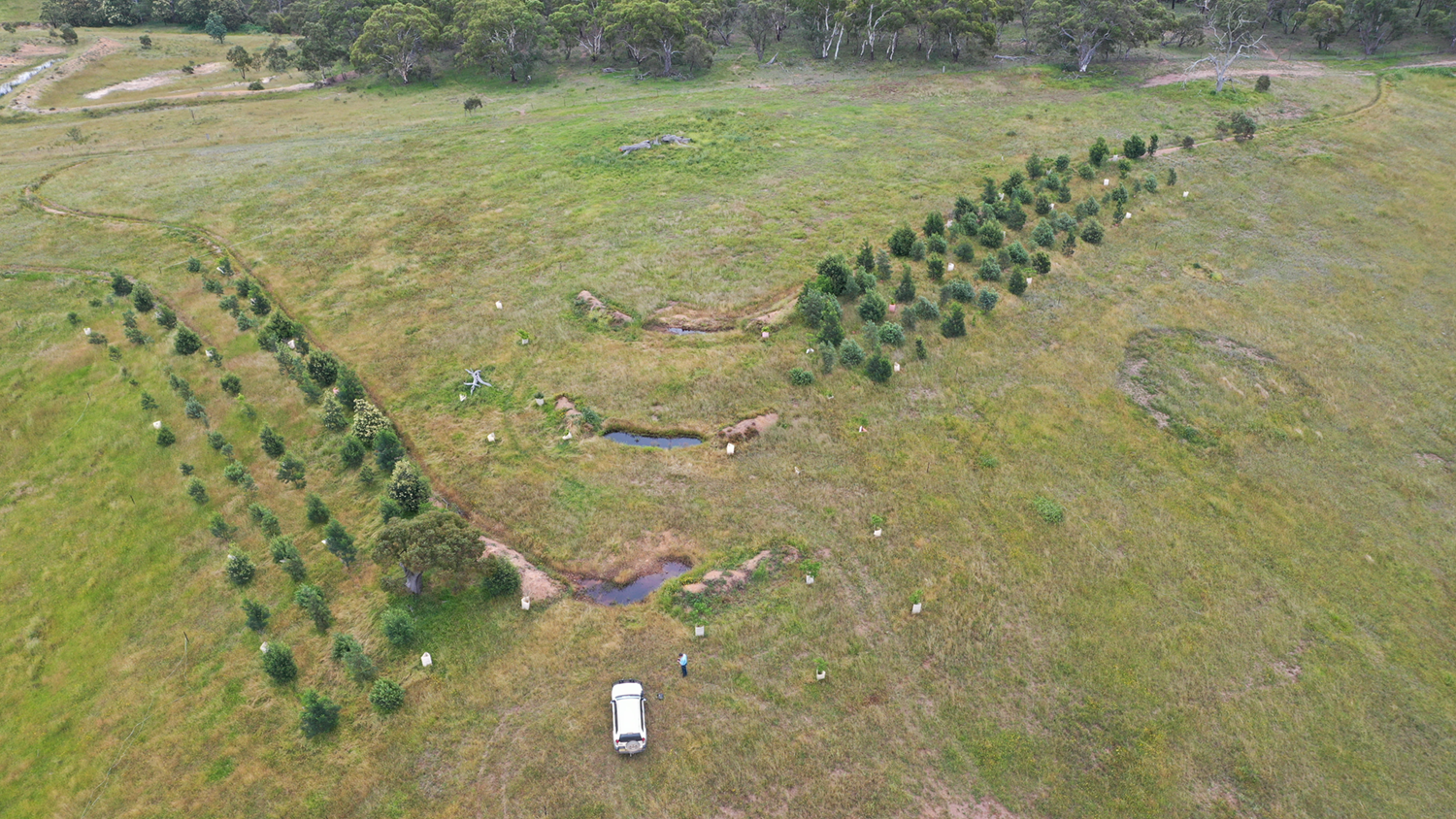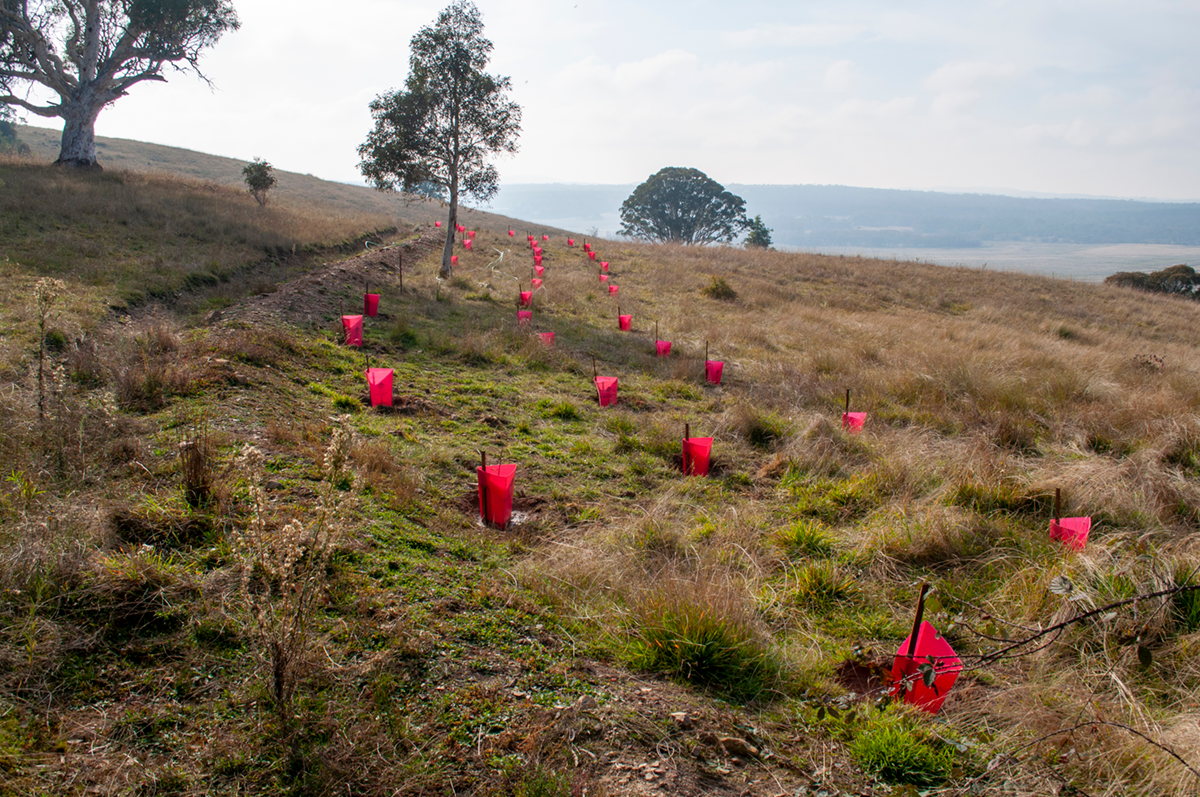Top contour plantings at Duralla, as part of the Mulloon Rehydration Initiative*.
We have been doing a lot of thinking about the Carbon Market and how best to fulfil our mission within this space.
When Mulloon repairs landscapes and catchments we create hydrated, healthy soils. These soils are not only good for biodiversity and agricultural productivity, they are also excellent carbon sinks.
When landholders set up a Carbon Project the Clean Energy Regulator requires a landholder to do something “new” to their land to qualify as a Carbon Project. Our landscape rehydration techniques meet this “newness” requirement and will sit within the requirements of the “soil carbon method” and the “integrated farm management method.”
Sequestering carbon is not the primary aim of our process and techniques, but since it is a natural by-product of our methods, we understand that landholders can profit from this process by receiving Australian Carbon Credit Units (ACCUs) as credit for carbon sequestered in their soil.
We have always encouraged landholders to not only run regenerative operations but also to run profitable operations as profitable landholders have more resources to manage their land responsibly. If a by-product of positive land stewardship is the ability to earn (and potentially sell) ACCUs, all the better.
Matt Egerton-Warburton
Revegetation on the slopes overlooking Mulloon Creek.
*The Mulloon Rehydration Initiative is a catchment-scale project that aims to rebuild the natural landscape function of the Mulloon catchment and boost its resilience to climatic extremes for more reliable stream flows, improved ecosystem functioning and enhanced agricultural productivity.
The Mulloon Rehydration Initiative is jointly funded through the Mulloon Institute and the Australian Government’s National Landcare Program and is supported by the NSW Government’s Environmental Trust.

